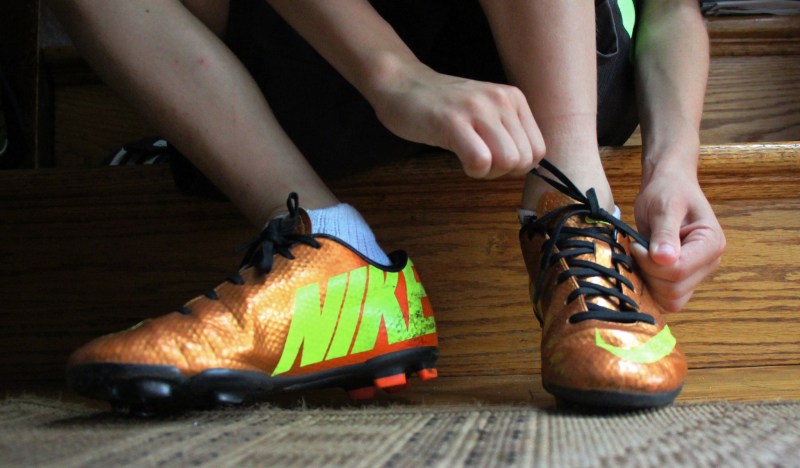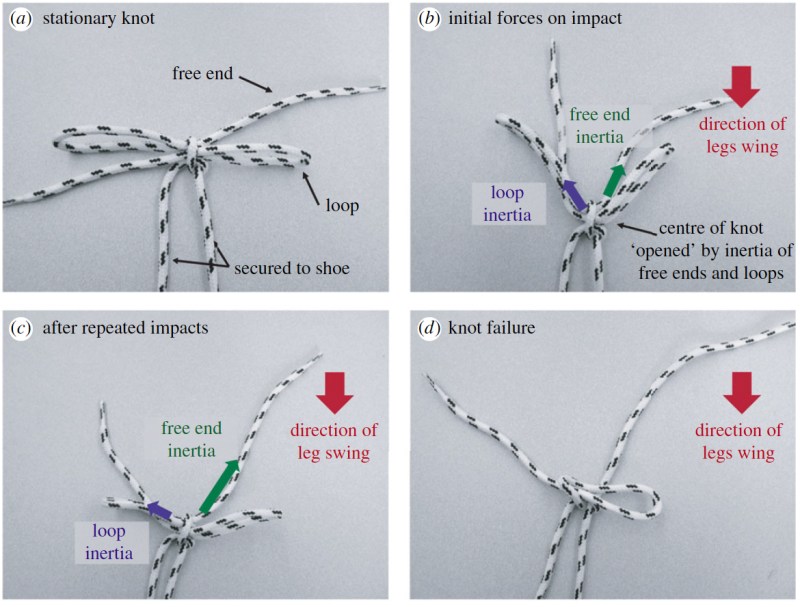
Like death and taxes, shoelaces will inevitably become untied.
And that’s just a scientific fact.
Researchers at Berkeley untangled the mystery behind the question of why shoelace knots become undone. The simple answer? It’s a symptom of the physics which occurs while a person is running or walking.
Human feet sustain an incredible amount of force with each step—about 7 G’s, comparable to a rollercoaster’s max of 6.7. This force is transferred through our spine to the rest of our body, but a shoelace knot also bears some of that burden, PBS reports.
Each step creates inertia in the free ends of the laces, pulling it slightly and, in effect, making the knot weaken. Instead of slowly slipping undone, the shoelaces untie in an instant once the knot’s been weakened to a tipping point when it can’t fight physics any longer.

Mechanical engineer Oliver O’Reilly made the conclusion with the help his two graduate students, Christopher Daily-Diamond and Christine Gregg, as a side project. They published their findings Tuesday in the Proceedings of the Royal Society A.
The researchers used a high-speed camera and accelerometer to form their hypothesis, before confirming it using a robot to simulate running and walking.
Read the scientific paper here.
—RealClearLife
This article was featured in the InsideHook newsletter. Sign up now.























